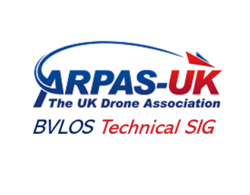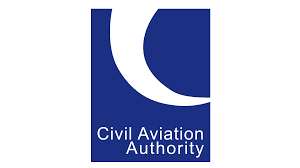

The CAA policy consultation on their DAA policy concept is launched – seeking views on the proposed methodology and means of compliance. DAA is one of the cornerstones of integrated airspace, providing RPAS with the ability to ‘See and Avoid’ other air traffic, reducing the mid-air collision risk of RPAS operating in airspace with other users. With an agreed DAA methodology, the regulator and industry can work together towards making extended routine BVLOS operations in UK airspace become a reality.

Philip Hicks, partner at Campaign Catapult and Principal Consultant and Founder of Pravo Consulting reports on the latest milestones achieved by industry drone and sensor experts and academics in the pursuit of mixed use air space and safe operations beyond visual line of sight (BVLOS).
Beyond visual line of sight (BVLOS) operations have taken a step forward in the UK with the culmination of the Project BLUEPRINT showcase presented at Cranfield University’s Digital Aviation Research and Technology Centre (DARTeC) on 25 June. This initiative, under the Innovate UK Future Flight Challenge, aims to develop open-source solutions for establishing drone zones in local areas, ensuring safe and efficient operations.
Project BLUEPRINT, a two-year initiative, has been pivotal in advancing BVLOS drone operations in the UK. The project team successfully developed and integrated minimum viable products (MVPs), laying the groundwork for BVLOS solutions. A comprehensive sensor network was deployed, enhancing situational awareness and safety. Initial testing validated the system’s functionality and performance, securing approval from the relevant authorities and demonstrating compliance with aviation standards.
“Project BLUEPRINT was developed to show how ground-based surveillance networks and an open-architecture approach to UTM can enable BVLOS operations at scale,” said James Dunthorne, Strategic Lead for Project BLUEPRINT. “Our team has developed the necessary systems, integrated them, tested them, safety assessed them, and operated them in a live environment, allowing us to pull off a demonstration at this event that will hopefully give industry, government and regulators a clear vision for how the future of drone integration will come together. We’d like to thank everyone who has put in an extraordinary amount of effort to make this event so successful,”
The presentation on July 25 included live flight demonstrations in four parts covering flight plan and amendments with ‘intruder entering a transponder mandatory zone (TMZ) without permission’. Scenarios included a range of aircraft including VTOL BVLOS UAS (real take off from Cranfield Airport), Fixed Wing BVLOS UAS (simulated) and VTOL VLOS UAS (simulated)
Previous BVLOS projects have primarily operated in temporary danger areas (TDA’s) which are temporary and isolated from other airspace users, limiting scalability. These operations have focused on technology demonstrations and trials without establishing a sustainable business model.
With the blueprint for BVLOS in large part developed, the project team is now focused on the next phase: Detect and Avoid (DAA) testing.
The DAA testing phase is critical for BVLOS operations, encompassing validation of sensor coverage using ADS-B equipped unmanned aircraft systems (UAS), simulation scenarios for pilot decision-making, rigorous command performance validation, feedback loop simulations, and comprehensive system integrity testing. This phase aims to ensure the overall system’s reliability and calculate risk ratios accurately.
Next steps include working with Cranfield Airport and CAA to obtain TRA approval (by September 2024) and completion of assurance work in line with CAA’s DAA policy concept. Engaging with the general aviation industry, ARPAS-UK and CAA, the project aligns BVLOS operations with existing aviation practices. Inevitably, policymakers and regulators need to key into trials such as BLUEPRINT, and this will include alignment with the CAA’s Airspace policy concept for BVLOS flying, (dubbed as a roadmap for the development and modernisation of UK airspace until 2040).
Graham Brown, Chair of ARPAS-UK summarised: “The path to fully integrated airspace is complex with many moving parts. This project is excellent progress towards that goal.”
The key milestones to the project are:
Project BLUEPRINT relies on the collective efforts of the following organisations:
Many of the above organisations are ARPAS-UK Members.
Philip Hicks, 30 June 2024
From Project BLUEPRINT trials lay groundwork for open-architecture UK UTM system – Unmanned airspace

uAvionix, a leader in communications, navigation, and surveillance (CNS) solutions for the safe integration of Crewed and Uncrewed Aircraft Systems (UAS), has announced its acquisition of Iris Automation™, provider of optical Detect and Avoid (DAA) technology. This strategic move combines uAvionix’s extensive CNS and aviation expertise with Iris’ leadership in computer vision-based systems for the safe separation of aircraft. The acquisition not only bolsters uAvionix’s capabilities and services but also marks an important leadership change as Jon Damush, former CEO of Iris Automation, takes the helm as CEO of uAvionix Corporation.
“The combination of Iris Automation’s and uAvionix’s capabilities provides for a multi-layered-safety architecture that supports integration of UAS into the National Airspace System,” noted Paul Beard, CTO and founder of uAvionix. “Through our collective efforts, we are solving the two biggest technical challenges to UAS integration: Command and Control and Detect and Avoid. Solving these problems builds safer airspace for all users.”
A Safe and Efficient Integrated Airspace
uAvionix’s deep experience with avionics development and certification in crewed, uncrewed, and defense technologies have long provided innovative and cost-effective products and services that create cooperative communication and awareness for all airspace users, from the stratosphere to the airport surface. Iris Automation’s pioneering airborne and ground-based optical systems deliver non-cooperative situational awareness for the integration of crewed and uncrewed aircraft. Together, the combined capabilities position uAvionix to provide aviators with the certified avionics, aviation data, and safety solutions necessary for a fully integrated airspace.
Jon Damush Assumes Role of CEO of uAvionix Corporation

As CEO, Jon Damush expands the current uAvionix leadership team and brings more than 30 years of aviation technology experience. His extensive background in engineering for crewed and uncrewed aviation, software development, and systems integration positions him as a visionary leader to guide uAvionix’s growth across diverse markets, including General Aviation, Uncrewed Aviation, Defense, and Aviation Networks.
“Jon Damush’s appointment as CEO hits all the right marks for uAvionix. His exceptional background and vision complement an already strong leadership team at uAvionix and aligns perfectly with the uAvionix mission to lead the way in advancing aviation safety and efficiency,” said David Page, Partner at DC Capital Partners. “The addition of Iris’ optical capabilities with existing uAvionix solutions further cements our market position within BVLOS operations.”
The acquisition of Iris Automation, coupled with Jon Damush’s leadership, fortifies uAvionix’s position as an industry leader for the safe and efficient integration of UAS into the National Airspace. By innovatively combining its aviation expertise with Iris’ advanced technology systems, the company is ushering in a new era for safety and efficiency for everything that flies.
About uAvionix
uAvionix was founded with the mission of bringing safety solutions to aviation that accelerate the integration of Unmanned Aircraft Systems (UAS) into National Airspace Systems (NAS). uAvionix offers innovative, low SWaP TSO certified and uncertified avionics and services for General Aviation (GA), Defense and UAS markets. The team consists of an unparalleled engineering and management team with a unique combination of experience within avionics, surveillance, airport services, UAS aircraft development, radio frequency (RF), and semiconductor industries.
To learn more about uAvionix crewed and uncrewed products and services, please visit: www.uavionix.com
Follow uAvionix on LinkedIn, Twitter, Facebook, Instagram
uAvionix Media Contact: [email protected]
About Iris Automation
Iris Automation is a safety avionics technology company pioneering on- and off-board perception systems and aviation policy services that enable customers to build scalable operations for crewed and uncrewed aircraft; unlocking the potential of countless industries. Iris’ Casia system runs either onboard the aircraft or in a ground-based configuration. We work closely with civil aviation authorities globally as they implement regulatory frameworks ensuring BVLOS is conducted safely, partnering on multiple FAA ASSURE and BEYOND UAV Integration Programs and Transport Canada’s BVLOS Technology Demonstration Program. Visit www.irisonboard.com.
uAvionix is an ARPAS-UK Member.
24 October 2023

True Beyond visual line-of-sight (BVLOS) will take off when technologies that make this possible come at an acceptable size, weight, power and cost (SWAP-C). The toughest technological challenge on the way to UAV autonomy is last resort tactical airspace deconfliction by means of onboard sensing, also known as Detect and Avoid (DAA). Join us to discuss safety goal posts, what can be achieved with different sensors and data processing techniques, and whether we can meet the industry needs for SWAP-C and chart a course towards certification.
Speaker Info:

Vidhya Sridhar, Head of Autonomous Technology, TTP
Vidhya leads the autonomous technologies market team at TTP working on exciting technology enablers for safe and secure autonomy on the ground, in the air and in space. She has been deeply involved in the UAV and space sustainability sectors, and has engaged with various stakeholders to assess communication and safety subsystem offerings. Vidhya is an engineer with a background in digital signal processing and communications.